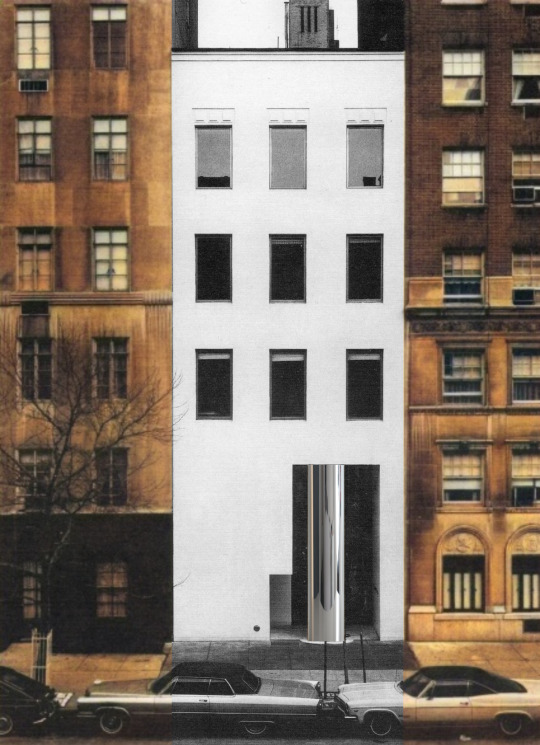#HolleinGallery
Explore tagged Tumblr posts
Text

Transcending Boundaries: The Artistic Architecture of Hollein's Feigen Gallery
Hans Hollein's Feigen Gallery stands as a testament to his vision of architecture transcending traditional boundaries. The gallery's design embodies Hollein's belief that architecture should not only serve as a physical space but also evoke emotional and psychological responses. By commissioning Hollein to design his gallery, Richard Feigen sought to create a space that would challenge conventional notions of architecture and serve as a fitting backdrop for contemporary art.
The gallery's design reflects Hollein's postmodern sensibilities, incorporating elements of asymmetry, spatial manipulation, and a departure from conventional architectural norms. The structural asymmetry of the grand opening supported by a reflective column serves as a striking feature, drawing attention and inviting exploration. This design choice not only adds visual interest but also prompts viewers to question the traditional hierarchy of architectural elements.
The entrance itself becomes an artistic statement, blurring the lines between architecture and art. Hollein's deliberate departure from the surrounding buildings in New York reflects his belief in architecture as a counterpoint, challenging the existing urban fabric and introducing a new dialogue.
The question arises: What is the relationship between art and architecture within the context of Hollein's Feigen Gallery? The gallery's design suggests a symbiotic relationship, where architecture becomes an integral part of the artistic experience. However, the challenge lies in finding a balance where the architecture enhances rather than overwhelms the art it houses. As Feigen's experience with contemporary artists refusing to show in the space demonstrates, achieving this balance is not always straightforward.
Ultimately, Hollein's Feigen Gallery can be seen as a collage of architectural influences, artistic expression, and philosophical inquiry. It challenges viewers to reconsider their preconceptions of space, form, and function, while also raising important questions about the intersection of art and architecture in the modern world.
#HolleinGallery#ArtMeetsArchitecture#PostmodernDesign#FeigenGallery#UrbanCounterpoint#ArchitecturalCollage#TranscendingBoundaries#ArtisticExpression#ReflectiveColumn#SpatialManipulation#architecture#berlin#area#london#acme#chicago#puzzle#edwin lutyens#massimoscolari#oma
5 notes
·
View notes